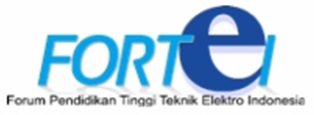Implementasi 5G Core Network Pada Bare Metal Server
Sari
5G Core (5GC) Network merupakan salah satu teknologi utama pada teknologi seluler generasi ke-5. Perubahan besar yang terjadi pada 5GC adalah perubahan dari arsitektur monolithic menjadi arsitektur yang modular dan aksesnya dibuka untuk umum. Hal ini merubah pengembangan 5GC menjadi lebih baik. Beberapa penelitian yang sudah dilakukan masih menggunakan 5GC non-standalone yang ditandai dengan hadirnya Evolved Packet Core (EPC) dalam implementasinya. Maka dari itu penelitian ini bertujuan untuk mengimplementasikan arsitektur 5GC standalone yang didefinisikan oleh 3GPP release 15 pada baremetal server. Kemudian 5GC diintegrasikan dengan User Equipment (UE) dan Radio Access Network (RAN). Percobaan ini menggunakan metode penelitian yang mencakup instalasi dan konfigurasi source code Free5GC, integrasi dengan simulator UERANSIM, serta pengujian performa menggunakan metrik bandwidth, throughput, dan round-trip time (RTT). Setelah dilakukan pengukuran performa menggunakan beberapa metrik pengukuran dari 5GC yang telah dibangun dapat disimpulkan bahwa 5GC yang dibangun berhasil diimplementasikan dan berfungsi dengan baik dalam mendukung konektivitas data. Pengujian performa mencatat bandwidth rata-rata sebesar 3,5 Gbps, throughput rata-rata 21,04 Mbps untuk unduh dan 19,125 Mbps untuk unggah, serta RTT rata-rata 21,229 ms. Penelitian ini memberikan kontribusi penting dalam pengembangan jaringan 5G yang terbuka dan dapat diandalkan, terutama pada aspek konektivitas data.
5G Core (5GC) Network is a key technology in fifth-generation cellular systems. One of the significant advancements in 5GC is the shift from a monolithic to a modular architecture with open access, enabling better development of the technology. However, many existing studies still focus on non-standalone 5GC, which includes the Evolved Packet Core (EPC) in its implementation. This study aims to implement a standalone 5GC architecture, as defined by 3GPP Release 15, on a bare metal server. The implementation integrates 5GC with User Equipment (UE) and Radio Access Network (RAN). The research methodology involves installing and configuring the Free5GC source code, integrating it with the UERANSIM simulator, and evaluating its performance using metrics such as bandwidth, throughput, and round-trip time (RTT). Results show that the implemented 5GC operates successfully and effectively supports data connectivity. The performance tests recorded an average bandwidth of 3.5 Gbps, a download throughput of 21.04 Mbps, an upload throughput of 19.125 Mbps, and an average RTT of 21.229 ms. This study contributes significantly to the advancement of open, flexible, and reliable 5G networks, particularly in enhancing data connectivity performance.
Kata Kunci
Teks Lengkap:
PDFDilihat:
Referensi
F. Boccardi, R. W. Heath, A. Lozano, T. L. Marzetta, and P. Popovski, "Five disruptive technology directions for 5G," IEEE Commun. Mag., vol. 52, no. 2, pp. 74–80, Feb. 2014.
D. Martín-Sacristán, J. F. Monserrat, J. Cabrejas-Penuelas, D. Calabuig, S. Garrigas, and N. Cardona, "On The Way Towards Fourth-Generation Mobile: 3GPP LTE and LTE-Advanced," EURASIP J. Wirel. Commun. Netw., vol. 2009, no. 1, pp. 1–11, 2009.
J. Haavisto, M. Arif, L. Lovén, T. Leppänen, and J. Riekki, "Open-source RANs in practice: An over-the-air deployment for 5G MEC," in Proc. IEEE European Conf. on Networks and Communications (EuCNC), Valencia, Spain, 2019, pp. 1–5.
P. Berde et al., "ONOS: Towards an Open, Distributed SDN OS," in Proc. ACM SIGCOMM Workshop on Hot Topics in Software Defined Networking (HotSDN), Chicago, IL, USA, 2014, pp. 1–6.
T. Kim et al., "An Implementation Study of Network Data Analytic Function in 5G," in Proc. 2022 IEEE Int. Conf. on Consumer Electronics (ICCE), Las Vegas, NV, USA, Jan. 2022, pp. 1–3.
Free5GC Project. [Online]. Available: https://www.free5gc.org/. [Accessed: Nov. 21, 2024]
ETSI, 5G; System Architecture for the 5G System (5GS) (3GPP TS 23.501 Version 15.13.0 Release 15), 2022. [Online]. Available: https://www.etsi.org. [Accessed: Nov. 21, 2024].
Y. H. Chai and F. J. Lin, "Evaluating Dedicated Slices of Different Configurations in 5G core," Journal of Computer and Communications, vol. 9, no. 7, pp. 55–72, 2021.
X. Hou, M. Wu, and M. Zhao, "An Optimization Routing Algorithm Based on Segment Routing in Software-Defined Networks," Sensors, vol. 19, no. 1, pp. 1–15, 2018.
F. J. D. S. Neto, E. Amatucci, N. A. Nassif, and P. A. M. Farias, "Analysis for Comparison of Framework For 5G Core Implementation," in Proc. 2021 Int. Conf. on Information Science and Communications Technologies (ICISCT), Tashkent, Uzbekistan, Nov. 2021, pp. 1–5.
DOI: https://doi.org/10.15575/telka.v11n2.142-150
Refbacks
- Saat ini tidak ada refbacks.
Jurnal TELKA terindex oleh :







Didukung oleh :


Ciptaan disebarluaskan di bawah Lisensi Creative Commons Atribusi-NonKomersial-BerbagiSerupa 4.0 Internasional.



